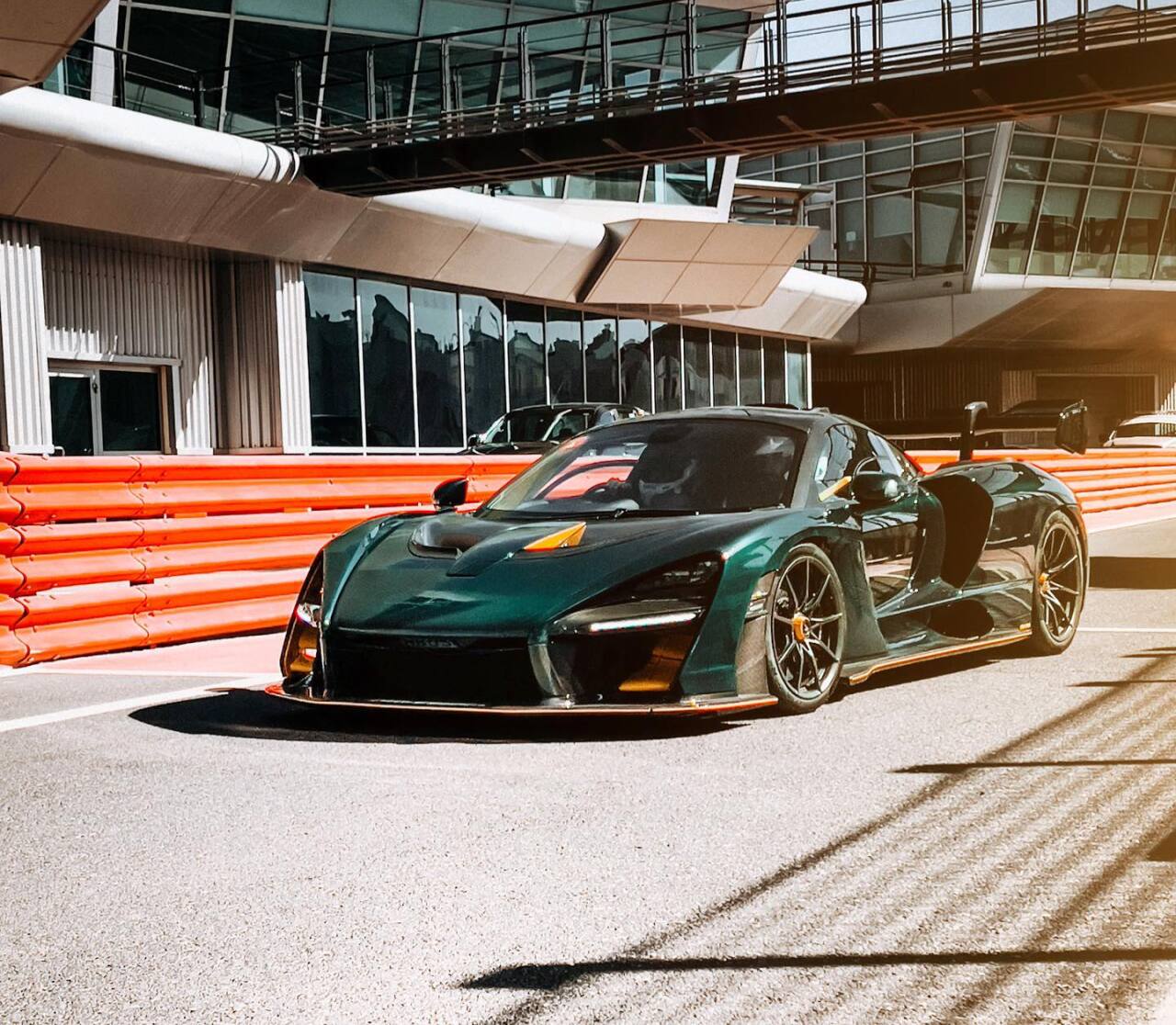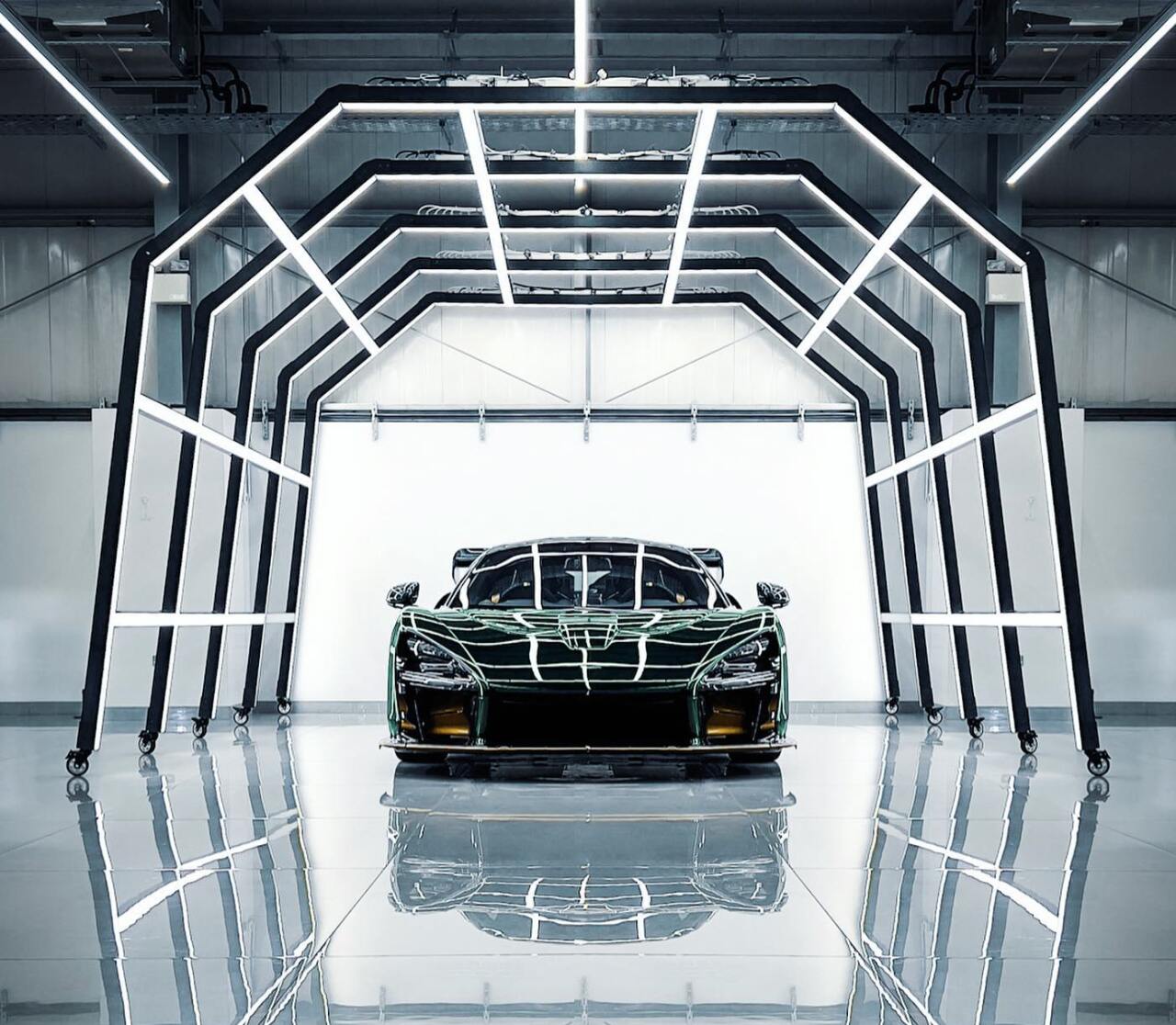Highest Spec'd McLaren Sennas Face Off! 19 Jan 2022

Welcome back to NVN Dubai! About three years ago, my buddy who owns this centre (@the23collection on Instagram), took delivery of this car – the McLaren Senna. I was out here in Dubai by coincidence, and I rushed to go and see it.
Not in my wildest dreams did I think I would ever own a McLaren Senna, but here we are, three years later and mine is halfway around the world. We thought while the two cars are in town, we couldn’t not get together and share an exclusive walk and talk of the incredible details of these very special cars!
Before we go into the specific details of each of these cars, let’s give you a general overview of what the McLaren Senna was all about. The idea was for it to be an incarnation of the distillation of what McLaren is all about. The fact that they named it after Senna – their most famous Formula One driver ever, would suggest the ethos of these cars.
They are distilled driving focus; there is no sound deadening, they are raw, they are pure, they are all about lap times and down force – of which they carry 800kg’s, which is unbelievable! They are just shy of 800 horsepower. Nought to sixty in around 2.8 seconds, and they will go over 200 miles an hour. It is one of the lightest road cars that McLaren has ever made. They run a flat plane crank turbo charged V8, and the engagement from these is unbelievable!
Today is about the subtle details that are on each of these car’s centres, which are both heavily optioned MSO cars – MSO stands for McLaren Special Operations. The reason I wanted to start from the rear is that, for me, the back of this car is the most defining. As I mentioned, the car is all about aero and down force. The weight of the back wings is only 5kg, but they can hold 100 times their own weight. In combination with the aero on these cars, they developed 800kg of downforce. That is very similar to a full-blown GT3 car – not a GT3 road car – a GT3 category race car. They are not playing around!

What is really unique about the Senna is their use of active aero. The wing articulates, there are aerovanes at the front which expand and contract depending on the mode you are in and how you are driving it. The whole thing is designed to be a super pure, distilled, McLaren driving experience.
One of the most unique things about each of these cars is how they were ordered. Mine is a UK car, and the other is a GCC car, which is effectively a UAE car in this instance. One of the defining aesthetic features to tell these two cars apart from the outside is the exhausts. In the UK and GCC they have different regulations regarding exhausts – that is why the 23’s car has a twin exit exhaust tip, and my car has three. One thing I will share with you is that my car’s exhaust looks like the mask from scream, you are never going to unsee it! The twin exit exhaust tip on the 23’s car is the same for the US region. So, you can always tell if it’s a UK or European region car from the three-exit exhaust, or a GCC and US region car from the twin exit. The twin exit is a louder car which generally sounds better, but if you watch the recent video, the twin exhaust on the UK car still does an incredible job of flowing out big blue flames – 2 foot long!
Let’s get into the specific specifications of these cars, starting with the overall colour theme. At first, they look totally opposite, but the themes both come from Brazil and Senna. Brazilian colours are on our car – green and yellow. With the interior of the 23’s car, you will see a lot of the Brazilian influence – notably inspired by Senna’s racing helmet. The externals of both these cars are exposed carbon fibre. The blue on the outside and interior of the 23’s car is a nod to the internal colour of Senna’s helmet, whereas the exterior of our car, which is a deep rich green, is a nod to the overall Brazilian theme.
What is quite interesting and subtle is the badging. When the 23’s car was ordered, it was a very early car. In fact, it was one of the first heavily MSO optioned Senna’s to roll out of the factory. When it was launched, the MSO specific badging was not an option, so this car’s bonnet is fundamentally different. The reason being, it has a more conventional McLaren physical badge which has to sit inlaid within the formation of the bonnet. The green car’s badge option was introduced much later by McLaren, and only for an MSO spec’d car – that meant if you have exposed carbon fibre on the body of your Senna, you are only allowed to have the electro chromatic which sits underneath the clear coat. When you run your fingers over the badge you can subtly feel the embossed nature of how the clear coat sits on the badging, whereas on the 23’s car, it is a physical badge which is subtle, but still a big spec difference.
Do you remember that active aero out I was talking about? There is no better demonstration of options and physicality than the fronts of these cars. On our car, the yellow colouring is an example of the MSO options to highlight the active aero. The flaps articulate depending on the driving mode you are in, how fast you are going, the condition of the car etc. On the 23’s car, they are still the same blue as the body, but it blends into the darkened carbon cave of the aero intakes.

One of the cool features on the 23’s car which screams Senna and Brazil are the highlighted accents that run around the whole perimeter – it is the distinct Brazilian flag theme. On our car, the accent surrounding the permitter is yellow only, and I love the green trim.
In understanding the MSO process, the accents on the cars are hand painted. It is challenge enough to do a single stripe, but the twin stripes on the 23’s car – the detail is absolutely stunning! This detail continues into the interior where they both have very similar 12 o’clock markers on the steering wheels.
The reason we got these two Senna’s together in the first place is that they are both full exposed carbon body cars, but there is a difference. Let me highlight those to you right now!
The 23’s car has a black carbon air scoop while my car has a green carbon fibre air scoop. The 23’s has a blue carbon fibre c-pillar, and ours has a black carbon fibre c-pillar. The 23’s car has black carbon fibre vents and ours has green carbon fibre vents. The 23 has a blue carbon fibre wing, and, you guessed it – ours has a black and green carbon fibre wing.
On our car, the end plates are black without any accented highlighting, but what I really like is that the Senna symbol on it is created from gloss and satin carbon, so that it is in the clear coat itself – it is not a transfer or a sticker – it is part of the carbon fibre overlay. On the 23’s car it has a clean, beautifully exposed carbon end plate with the Brazilian highlighted accents running round the edge.
When it comes to wheels, they both have a 19 inch at the front and a 20 inch at the rear, with satin graphite on our car, and gloss black on the 23’s. Both are optioned with MSO highlights – the green centre caps on the 23’s and yellow on ours. The 23 has matching green break callipers, and ours has black.
Let’s talk interiors – the fundamentally biggest difference between these two cars is ours is right hand drive, and the 23’s is left hand drive. From a social point of view, it is awesome when you wind down the tiny, almost non-existent windows to speak to each other – it’s super handy! But other than that, the interiors are worlds apart other, aside from the 12 o’clock marker on the steering wheel of which we have the Brazilian flag on our car.
The most defining feature in our car is the green exposed carbon Senna seat. Interestingly, 23’s car defined it with more interior padding and colours, while we defined it more with the carbon on the seats. Opposite approaches with a similar impact. Fun fact – our car’s seats weigh only 5kg’s. If you are familiar with the weight of seats – which I know it is a bit of a weird topic – they are generally really chunky, heavy things, and this is a massive part of the weight saving aspect of Senna.
Sticking to the Brazilian theme, we have yellow seat belts, and the rest of the interior is satin carbon with a muted interior because the seats are green – you don’t want too much colour! There is also green carbon continuing on the wheel itself, and an Alcantara wheel which is important because that contrasts with the other car.
In terms of sense of occasion, the first time I saw the 23’s Senna is coming flooding back to me! The main factor was how impressed I was by the interior – it is interestingly leather instead of Alcantara, which for a track focussed car is unique. In contrast to our car, it also has a leather steering wheel and the Brazilian 12 o’clock marker continues with a yellow contrasting stitch running up the inside of the wheel. The control pinnacle which moves with the seat (which for Senna, is unique) is accented in green, and the rest of it is yellow – sticking to the Brazilian theme. Another subtle detail which we don’t have in our car is the highlighted accents on the plus and minus stalks of the steering wheel. There is green on the plus, and yellow on the minus – this detail is super cool!
What is great about both cars is that they get used properly – on track and on the read, getting them out and about and putting miles on them.
Finally, the number one thing that bonds these two cars together is our mutual love for Ayrton Senna – that is why they have Ayrton Senna’s signature on both carbon sills of each car. They are applied slightly different with our car having a full-sized Senna script on the carbon sill, and the 23 has the McLaren logo in the carbon, complemented by the Ayrton Senna carbon script – in yellow on both cars.
This is what it is all about, a nod to Senna, a celebration of Brazil, and the embodiment of one of the purest track cars that McLaren have ever made which wears a set of number plates!